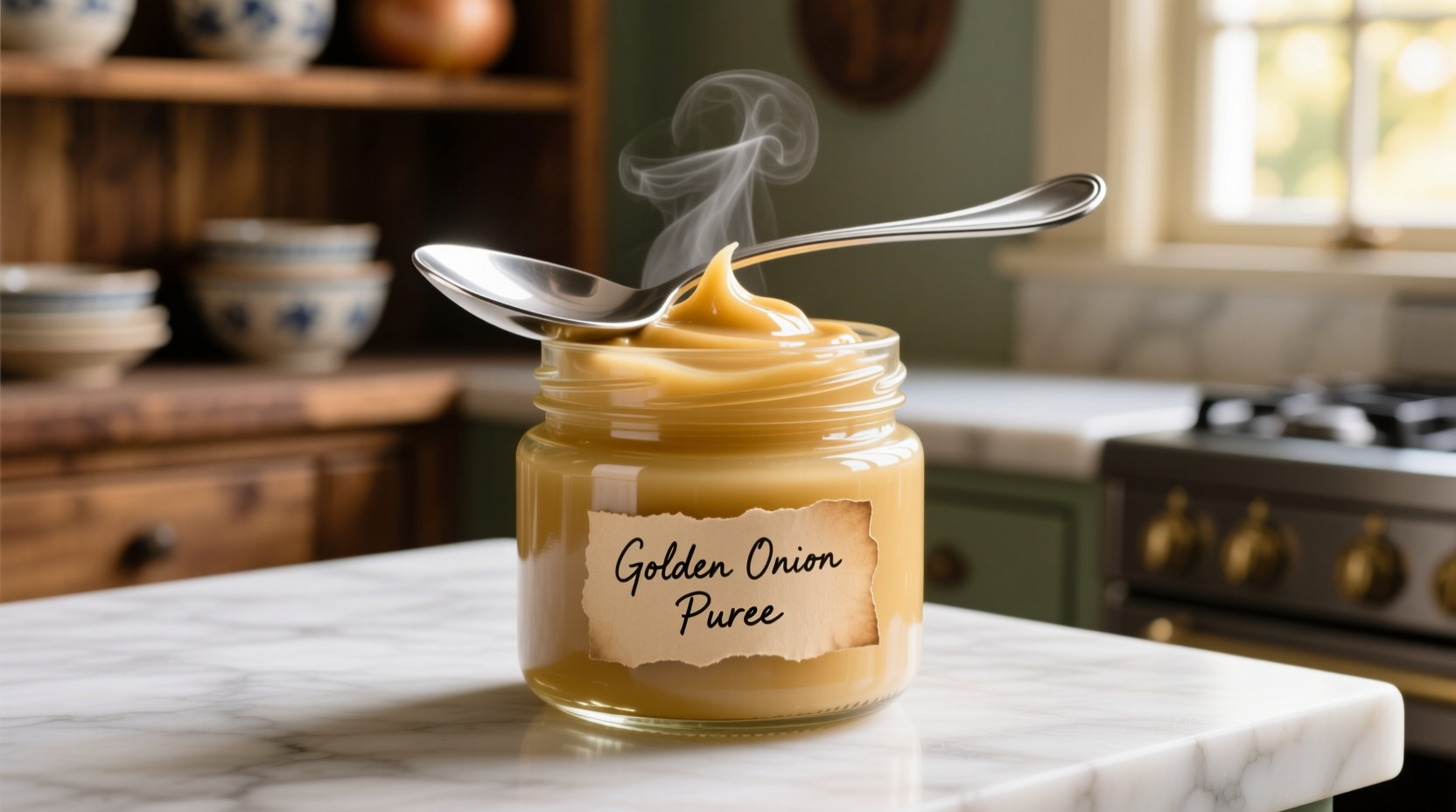Creating the perfect onion puree transforms ordinary dishes into restaurant-quality creations. This versatile preparation solves common cooking challenges like inconsistent flavor distribution and time-consuming prep work. Whether you're a home cook looking to streamline weeknight meals or a professional chef seeking flavor consistency, mastering onion puree opens new culinary possibilities.
What Exactly Is Onion Puree?
Onion puree is a smooth, homogenous mixture created by cooking onions until tender, then blending to a silky consistency. Unlike chopped or diced onions, puree integrates seamlessly into sauces, soups, and braises without altering texture. The cooking process caramelizes natural sugars while mellowing sharp compounds, resulting in a sweeter, more complex flavor profile than raw onions.
Why Professional Chefs Rely on Onion Puree
Professional kitchens maintain onion puree as a foundational ingredient for several compelling reasons:
- Flavor consistency - Eliminates variations from onion size, age, or variety
- Time efficiency - Saves 15-20 minutes per recipe by skipping chopping and initial cooking
- Texture control - Provides onion flavor without distracting pieces
- Waste reduction - Uses imperfect or surplus onions before they spoil
- Flavor layering - Creates deeper flavor foundations for complex dishes
Onion Puree vs. Alternative Preparations
| Preparation Method | Flavor Intensity | Shelf Life | Best Applications | Texture Impact |
|---|---|---|---|---|
| Raw chopped onions | Sharp, pungent | 2-3 days refrigerated | Salsas, salads, garnishes | Distinct pieces |
| Caramelized onions | Sweet, complex | 5-7 days refrigerated | Burgers, pizzas, tarts | Soft, distinct pieces |
| Onion puree | Mellow, balanced | 3 weeks refrigerated, 6 months frozen | Sauces, soups, braises, baby food | Seamless integration |
| Onion powder | Concentrated, sometimes bitter | 2 years pantry | Dry rubs, spice blends | No texture |
Step-by-Step: Creating Perfect Onion Puree at Home
Follow this professional method for restaurant-quality results:
- Selection - Choose yellow onions for balanced flavor (about 2 lbs yields 1 cup puree)
- Preparation - Peel and roughly chop (no need for precision)
- Cooking - Combine onions with 1 tbsp oil and 1/4 cup water in saucepan
- Simmering - Cover and cook on low heat for 25-30 minutes until completely tender
- Blending - Transfer to blender and process until completely smooth (1-2 minutes)
- Straining (optional) - For ultra-smooth applications, press through fine-mesh sieve
- Cooling - Transfer to container and cool before storing

Storage Techniques That Maximize Shelf Life
Proper storage maintains flavor and prevents spoilage:
- Refrigeration - Store in airtight container for up to 3 weeks (top with 1/8 inch oil to prevent oxidation)
- Freezing - Portion into ice cube trays, then transfer to freezer bags (keeps 6 months)
- Vacuum sealing - Extends freezer life to 9 months with minimal flavor degradation
- Acid preservation - Add 1 tsp lemon juice per cup for extended refrigerator storage
When Onion Puree Outperforms Fresh Onions
Certain applications particularly benefit from using puree instead of fresh onions:
- Baby food preparation - Provides gentle onion flavor without choking hazards
- Emulsified sauces - Won't break delicate sauces like hollandaise or mayonnaise
- Clear soups and consommés - Delivers flavor without clouding the broth
- Pastry fillings - Prevents soggy spots in savory tarts and quiches
- Marinades - Penetrates proteins more effectively than chopped onions
Historical Evolution of Onion Puree in Professional Kitchens
While onions have been used since ancient times, the specific technique of pureeing has evolved significantly:
- Pre-1900s - Onions were primarily used whole or roughly chopped in stews
- Early 1900s - Escoffier's Le Guide Culinaire introduced refined onion preparations
- 1950s - Commercial food processors made pureeing accessible to home cooks
- 1980s - Nouvelle cuisine chefs emphasized smooth textures, increasing puree usage
- 2000s-present - Modernist cuisine techniques refined puree consistency and applications
Context Boundaries: When NOT to Use Onion Puree
Despite its versatility, onion puree has specific limitations:
- Raw applications - Never substitute for fresh onions in salads or salsas where texture matters
- High-heat searing - Puree burns easily compared to whole onion pieces
- Texture-dependent dishes - Avoid in recipes where onion pieces provide structural integrity
- Acid-sensitive preparations - Can develop off-flavors in highly acidic dishes over time
- When visual appeal matters - Lacks the aesthetic of caramelized onion strands
Professional Substitution Guide
Use these conversion ratios when adapting recipes:
- Onion puree for fresh onions - 1/4 cup puree = 1 medium chopped onion
- Onion powder for puree - 1 tsp powder = 2 tbsp puree (add 1 tbsp liquid)
- Shallot puree substitution - Use 20% less for milder flavor
- Leek puree substitution - Use equal amount for more delicate flavor
Troubleshooting Common Onion Puree Issues
Solve these frequent problems with professional solutions:
- Watery consistency - Simmer uncovered to reduce excess liquid before blending
- Bitter aftertaste - Add pinch of sugar during cooking to balance flavors
- Separation in storage - Stir well before use; add 1/2 tsp xanthan gum when blending
- Off-flavors developing - Always cool completely before storing to prevent steam buildup
- Color darkening - Add lemon juice to preserve golden hue during storage











 浙公网安备
33010002000092号
浙公网安备
33010002000092号 浙B2-20120091-4
浙B2-20120091-4